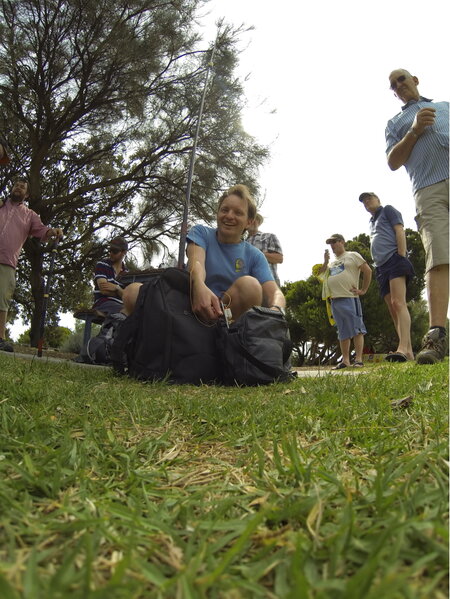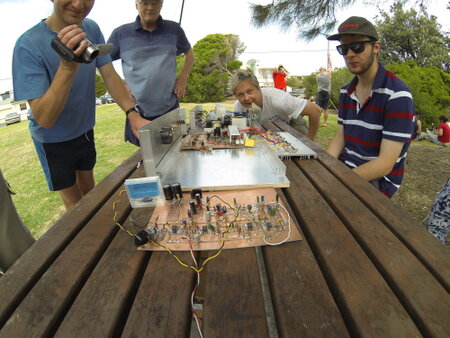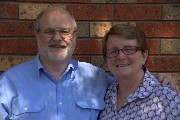Beaches
We sometimes like to take our radios down to the beach. The reason is that the salt water is conductive and it is great for High Frequency communications. We often go down to Dromana and set up on the pier there.
Another favourite spot is Victory Park on Chelsea beach, which is the venue for Peter VK3YE's regular "QRP By The Bay" event. QRP is an Amateur Radio Q-Code meaning "low power operation", indicating we are running less than 5 Watts of transmitter power, on batteries. The event often starts with a "show and tell" session, where everyone brings along some radio gear that they have built to show others.
We have even activated a Royal National Lifeboat Institution (RNLI) Station at Margate beach in the UK, while visiting our friend John G7OHO, in Kent.
When we go down to the beach, we often have our light-weight, collapsible, antenna masts with us. They are actually 10-metre long squid poles, normally used for fishing. We can easily string up a light-weight, half-wavelength, wire dipole antenna for the 40 metre Amateur Radio band, between two squid poles. It is just over 20 metres long and it is connected to our radio via a light-weight, coaxial cable at the centre of the wire. When asked what we are doing we often say we are "just fishing around on the air" :-)
Julie brings along her portable radio equipment in a small plastic transit case. It contains of a KX-3 HF Transceiver, batteries, speaker and a microphone. Everything you need to talk to other Amateur Radio operators around Australia and sometimes the World.
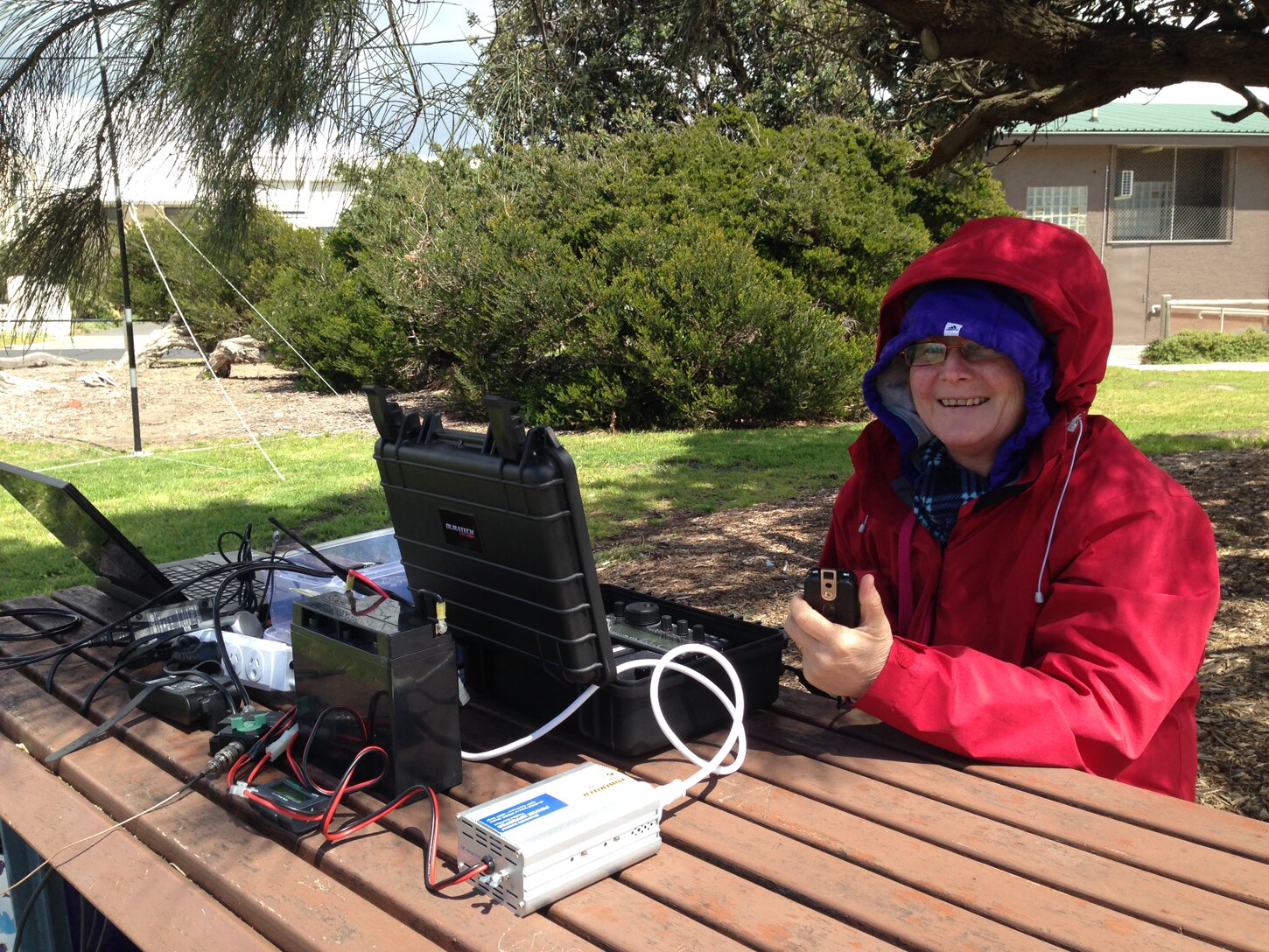
Julie at Victory Park on Chelsea Beach for "QRP By The Bay"
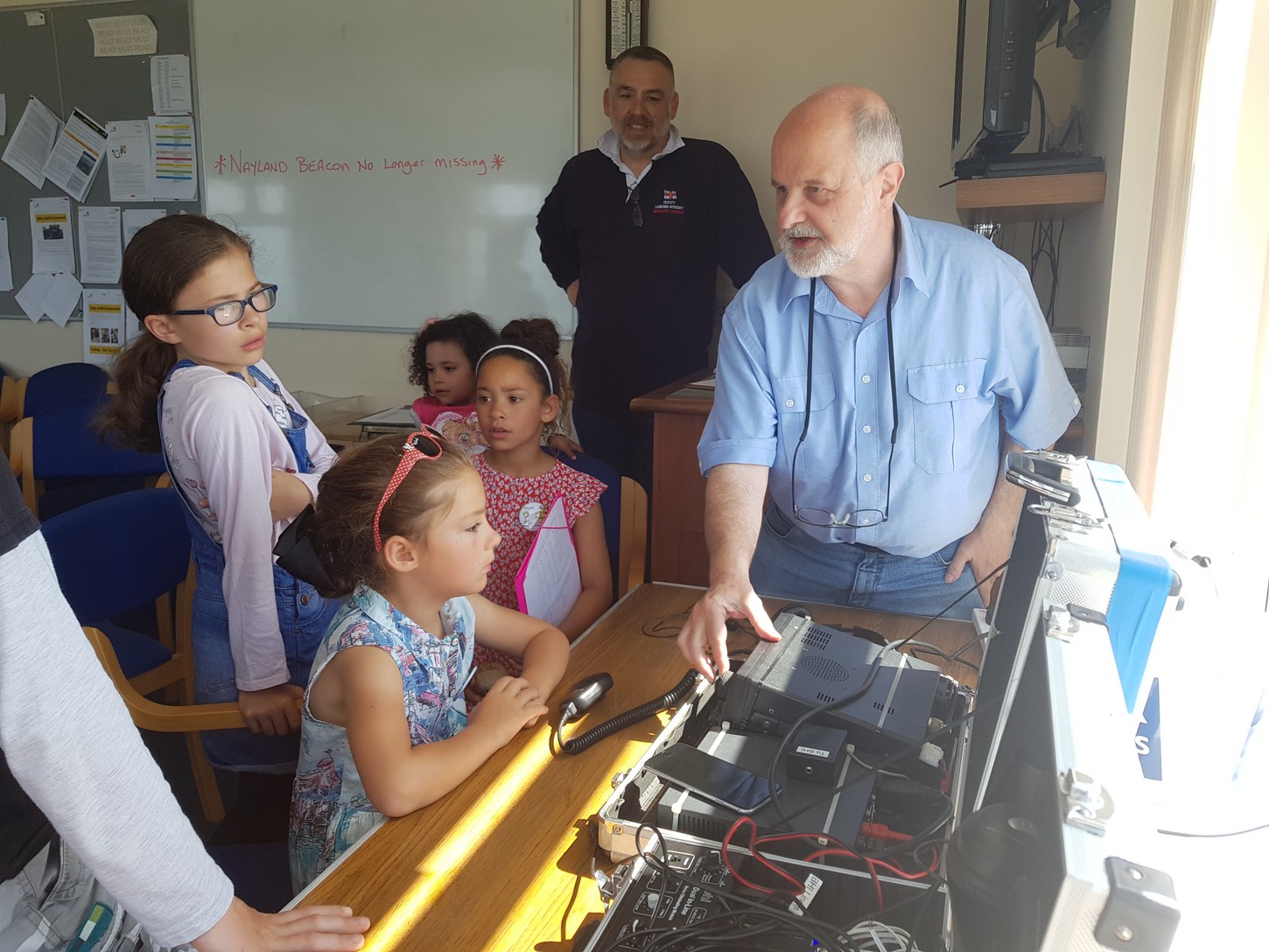
Joe at the RNLI Station on Margate Beach in Kent, UK

40 metre band, half-wave dipole antenna, RG-174 feedline


Our guyed squidpole at Chelsea

Show and tell at chelsea beach
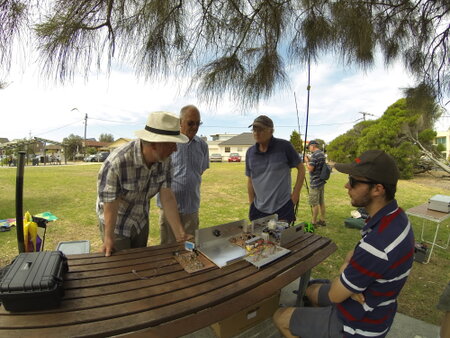


Julie set up on Dromana pier
